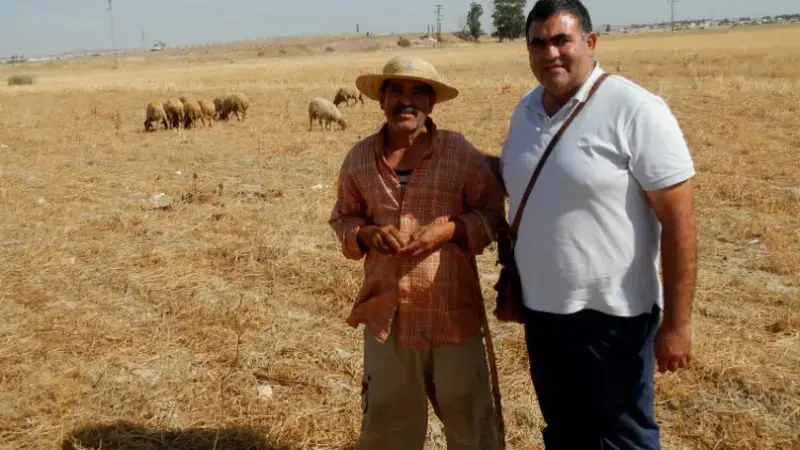Revisiting Vetch with Farmers Promotes Zero-Till Practice

Taoufiq Ben Ammar lives on one of the dales in Chouarnia (district of Siliana, Tunisia) and his livelihood is intrinsically linked to what he sells from wheat cropping, weaned lambs and a couple of dairy cows. He is one of 18 farmers in Chouarnia and Sned El Haddad localities where ICARDA and INRAT (the national agricultural research institute of Tunisia) have been collaborating for the past three years developing integrated crop-livestock solutions under an IFAD-funded Conservation Agriculture project in Tunisia, Algeria and Tajikistan.
Every year in late spring, farmers worry about the expected wheat yield. Many farmers have modest expectations for grain yield, despite an apparent good vegetative growth of the crops. Concerns remain about rain shortage during the months of April and May and its impact on grain filling and yield. Taoufiq says his fields are progressively being cropped under conservation agriculture and points to the savings in energy and mechanization costs that the cropping practices have generated. Now, they don't have to plough the land before seeding. Inside his barn are 300 well-stacked, finely cut and greeny vetch hay bales-- harvested in late April on only one ha, surprisingly high for a dry year. The vetch would be used to feed the growing lambs he wants to sell during Aid El Idha.
Salah Ben Youssef, Forage Specialist at INRAT noted that the vetch was introduced in the area as a substitute to cereal stubble grazing under a zero-till cropping package.
"Although it is an ancient crop widely grown in North Tunisia in the past, vetch is being rediscovered by the farmers in the region," said Ben Youssef.
"It is one of the technical options to address tradeoffs if farmers are to adhere to putting their land under conservation agriculture. The cropped area has been steadily increasing and now we are faced with the issue of seed availability at the start of every cropping season."
Jamel Sahli, another farmer in the neighborhood, expressed an interest in buying his harvest of vetch hay. Sahli was introduced vetch last year and decided to have it directly grazed in late spring early summer by his flock of ewes in the middle of the mating season. He observed that when the ewes were allowed to graze vetch, there was a "burst" in the frequency of females displaying estrus, in contrast to when the ewes were fed cereal stubble. The behavior is a manifestation of how nutrition affects reproduction in sheep.
What Sahli observed is likely associated with the effect of a brusque provision of high-quality nutriments from vetch on the reproductive axis of sheep. These observations can be assimilated to the classic "flushing effect" or the more recent concept of immediate nutrient supply commonly obtained by the distribution of moderate quantities (0.4 to 0.6 kg) of concentrate.
Vetch grazing can provide a synchronous provision of energy and protein which is highly beneficial to ovarian follicular growth and oocyte quality. Sahli is planning to use the same plot once again for his flock of ewes during the coming mating season.
"We plan to set-up a flock monitoring and data collection scheme this year to quantify the effect of vetch grazing on sheep reproduction by retrospectively assigning the lambing data (fertility and litter size) to the nature of the grazing material during mating time," says Mourad Rekik, small ruminant production scientist at ICARDA.
The results will feed into better integration of crop-livestock systems and further scaling out of zero-till package amongst the farmers.
Supported by: IFAD and implemented within the framework of CGIAR Research Program on Dryland Systems
